Contents
Frequent diseases faced by many parents are acute and chronic bronchitis in its various forms and course variants. Of particular interest is the onset of the disease in early childhood. This is due to the individual mechanisms of development, course, diagnosis and treatment of the disease in children of this age group.
Bronchitis is an inflammatory process that occurs in the mucous membrane of the bronchi, often affecting the mucous membrane of the nose and throat, trachea and larynx. Initially, inflammation appears in the nasopharynx, then passes into the respiratory tract. This means that under the influence of certain causal factors and background conditions, the structures located in the lumen of the bronchus of any caliber are damaged. At the same time, in the classical version, the inflammation does not pass to the adjacent tissues of the lungs or other parts of the upper respiratory tract.
The causes of the development of the disease can be several factors: a viral infection that contributes to the invasion of harmful microbes into the respiratory organs, hypothermia, dustiness, gas pollution, contacts with patients in the family.
Morbidity statistics among children
An increase in primary morbidity is observed in the cold season, especially in the transitional autumn-winter and winter-spring periods, when microorganisms are especially active due to the improvement in the temperature regime of the environment, and the body’s defenses are reduced. The incidence for children under the age of one year is 75-80 cases per 1000 children per year, from one year to 3 years – 180-200. Primary and independent damage to the bronchi is extremely rare. More often, bronchitis in children develops due to the spread of inflammation from other parts of the upper respiratory tract (pharyngitis, laryngitis, tracheitis), which occur with respiratory and colds. In this case, a descending path of penetration of infection into the bronchi is observed. Reverse spread – from the bronchi to the trachea, does not happen.
Girls and boys get sick equally often. With regard to the type of physique of the child, children with increased weight and signs of paratrophy are more prone to bronchitis, especially its obstructive forms. Hereditary predisposition and cases of family bronchitis are also noticed.
For a complete understanding of the essence of bronchitis in children under one year old and its frequent course up to 2-3 years, it is necessary to consider some anatomical and physiological features of bronchial structures characteristic of this age period. These factors act as a favorable background, predisposing to the onset and development of bronchitis, which can occur in the form of an acute, chronic or obstructive process.
1. Relatively large length of bronchial structures with a small lumen.
2. Insufficient development of the mucociliary apparatus. This means that too thick mucus is produced, which normally should protect the bronchial tree from irritating agents. At the same time, special villi for its removal are poorly developed.
3. Increased reactivity of the smooth muscles of the bronchus, which can lead to its spasm at the slightest irritation.
4. Imperfection of local immune mechanisms.
5. General immune dysfunction associated with the differentiation of immunocompetent cells in the specified age range.
6. Relative weakness of the muscles of the chest and cough center. This prevents good ventilation of the lungs and the natural removal of mucus from the lumen of the bronchi.
7. The presence of allergic conditions in a child (diathesis, food allergies, atopic dermatitis, seborrhea.)
The severity and number of these prerequisites are the main trigger point in starting the inflammatory process in the bronchus. In this case, mucosal edema occurs, a decrease in the lumen of the bronchus with a decrease in the volume of passing air, and as a result, the development of respiratory failure.
Signs and symptoms of bronchitis in children
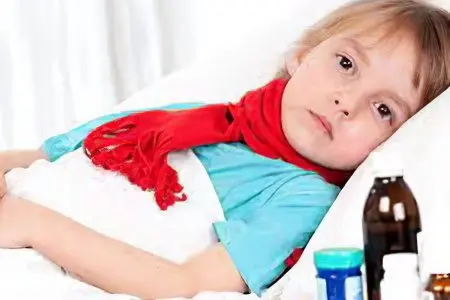
Early detection of signs of the disease will prevent complications and help to start treatment in a timely manner, which will increase its effectiveness. For bronchitis in children under one year old, as in young children (up to 2-3 years old), the criteria for making a diagnosis are:
Temperature with bronchitis in children precedes the full clinical picture. Its figures can be of the most diverse nature (from 37,1 ° С to 39,9 ° С), maintenance throughout the day and conditions for decreasing. These characteristics depend on the causative agent of the disease and the immune system of the child;
Prior acute respiratory disease. Very often, children can get bronchitis against the background of viral infections. This usually happens on the 3-4th day of SARS;
Cough is a basic symptom of bronchitis. By its nature, it can be said with clear certainty that the inflammation is localized precisely in the bronchi and at what stage it is. Usually its appearance corresponds to the onset of the disease. At this time, it is dry, sometimes hoarse. The child constantly coughs, almost with every breath. This occurs as a result of irritation of the inflamed mucosa with air. After a few days, the bronchial epithelium is restored and mucus begins to be actively produced to remove bacteria that colonize in places of inflammation. Clinically, this manifests itself in the form of a wet cough, which becomes less frequent and milder. At this time, the child may cough up clear or yellow sputum, which he usually swallows.
Chest pain. Children under one year old cannot say this, but older children sometimes point to it. Retrosternal localization is more typical for tracheobronchitis, which very often develops as a sequential descending process.
General weakness, lethargy and poor appetite in a child – these are far from specific signs of bronchitis. But their development should always alert parents. The fact is that the children’s body is so changeable that the course of the disease can change its direction every hour. Indicators signaling deterioration are these signs.
Wheezing Also, one of the specific features. Their characteristics can help determine the solution of the issue – simple or obstructive bronchitis. They can be dry or wet. Among the latter, large- and small-bellied ones are distinguished. The more they resemble crepitus, the smaller bronchi are affected, which requires differential diagnosis with pneumonia. At the same time, they can be heard either during auscultation of the chest, or even remotely, at a distance. Do not forget that they can also appear due to the accumulation of mucus in the throat, which can simulate a bronchitis clinic.
Dyspnea is a severe symptom of bronchitis. It characterizes the appearance of respiratory failure and the degree of its severity. The child begins to breathe often and hard, especially with any load. In small children, this is also manifested by the appearance of cyanosis of the skin during breastfeeding, which he refuses.
Strong heartbeat and tachycardia occur synchronously with shortness of breath and are also a sign of respiratory failure. The very appearance already speaks of a serious condition.
Usually, these signs are enough to make a diagnosis of bronchitis. In doubtful cases, to exclude concomitant lung damage in the form of bronchopneumonia or developmental anomalies, an X-ray examination of the chest organs is indicated. It is highly desirable to inoculate sputum for the composition of the microflora and its sensitivity to antibiotics, which will prevent the prescription of drugs that are not suitable for a particular child in this case.
Causes of bronchitis in children
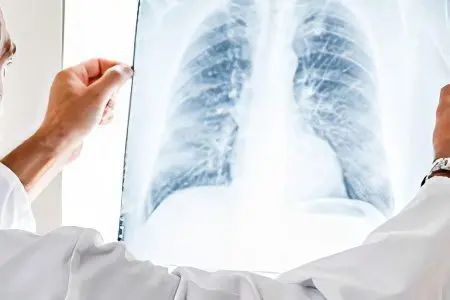
Among the etiological factors and mechanisms for the development of bronchitis in children under one year old with its frequent chronicity and recurrent course up to 2-3 years of age, one can single out the characteristics of the child’s body, factors that provoke the development of the disease and microorganisms that directly caused it. It is not worth dwelling additionally on the characteristics of the child’s body in infancy, as they are described in the “description of the disease” section. One has only to point out that all of them contribute to the progression of the inflammatory process.
As for the provoking factors in the development of bronchitis, it is necessary to identify important elements here.
Child hypothermia. This is due to the imperfection of thermoregulation of children, especially in the first three months of life. If the parents dress the child too lightly and at the same time walk outside or the child is in a room with an air temperature below 18-19 ° C, this can lead to hypothermia. And vice versa – if you wrap a child tightly, he will sweat. The smallest draft on damp skin is enough to cause hypothermia and subsequently bronchitis.
Teething. In this case, there is a huge amount of disagreement. When a child begins to cough, and teeth are cut in parallel, many parents perceive all the symptoms as signs of a natural process. Doctors stubbornly deny this as a variant of the norm, and insist on treating bronchitis. In fact, these two processes are interrelated. Naturally, teething requires a huge expenditure of energy and immune mechanisms suffer, mucus begins to be produced in the bronchi. If the process becomes inflammatory with the presence of all the signs, then it is stated as bronchitis (for more details: How to help a child with teething?).
Acute respiratory infections. In 75-80% of cases, they become the cause and background for the development of bronchitis. Among the direct causative agents of bronchitis in children under one year old, which primarily affect the bronchi and provoke the reproduction of bacterial flora, include influenza viruses, parainfluenza, rhinosincitial virus, cytomegalovirus, less often pathogens from the adenovirus family. They cause destruction of the bronchial epithelium. In this case, the mucosa becomes unprotected. Against this background, a secondary bacterial infection joins, which under normal conditions lives in the lumen of the bronchi, without causing any disturbances. These are most often streptococci, staphylococci, Haemophilus influenzae, pneumococci.
For reasons of occurrence, share viral, allergic, obstructive, asthmatic bronchitis. There are three types of bronchitis in children according to the international classification:
Acute bronchitis, manifested by acute inflammation of the bronchial mucosa.
Acute obstructive – leads to changes in the structure of the mucous membrane.
Acute bronchiolitis is an inflammatory process that affects the small bronchi.
These types of bronchitis in children differ in the development factor, the severity of the disease and the methods of treatment. Bronchitis in children is only viral. Infection occurs by airborne droplets, when coughing and sneezing. It should be noted that breastfed children rarely get sick with bronchitis, with the exception of cases when the child is born prematurely, has congenital malformations of the respiratory organs and or comes into contact with sick children. Bronchiolitis in children under one year old carries a danger, which consists in the development of acute respiratory failure against its background.
Small children always take parts from toys and designers into their mouths. Foreign bodies, getting into the child’s mouth, touching the mucous membrane, provoke the development of bronchitis, due to the fact that microbes live on their surface. Bronchitis is the result of irritation of the bronchi, for example, when inhaling chemicals. An allergy occurs, which leads to inflammation of the bronchial mucosa.
Acute bronchitis in children always follows a severe cold or flu, an infection, or an external irritant. Bronchitis begins as a common cold, can be very long and difficult.
Obstructive bronchitis in children
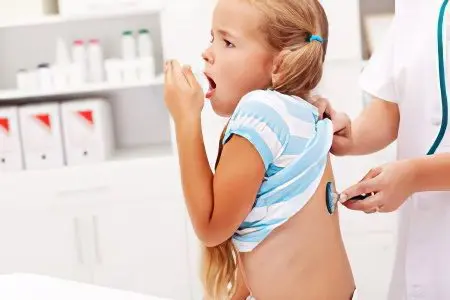
The first symptoms are a runny nose and a dry cough that worsens at night. A sick child feels weakness, pain behind the sternum, they are usually very restless, capricious, there is increased nervous excitability. In the blood test, a slight leukocytosis and an increase in ESR can be detected. There is an increase in body temperature, wheezing, shortness of breath.
After a few days, the cough becomes wet, sputum is released, which can be used to determine the type of bronchitis. The acute stage of the disease lasts less than a week, as a rule, it is cured within 5-6 days. The release of a transparent substance confirms the sign of an acute form of bronchitis, and a purulent one – of a chronic form. Untimely or incorrect treatment of manifestations of acute bronchitis is dangerous for the occurrence of protracted bronchitis, which threatens with complications.
Among all types of childhood bronchitis, two forms can be globally relevant – simple and obstructive. If the first does not cause special dangers and difficulties in treatment, then the second is quite the opposite. Obstructive bronchitis is a type of inflammatory lesion of the bronchi, in the mechanisms of development and clinical manifestations of which, the main role belongs to the violation of bronchial patency with respiratory failure.
The obstructive form of bronchitis, unlike ordinary bronchitis, is manifested by edema and deterioration of bronchial patency. The development of such pathologies is facilitated by various intrauterine disorders in the development of the respiratory organs, hypoxia, trauma, and early birth. Symptoms of this type of bronchitis are a paroxysmal cough and blue skin on the fingers and lips of the baby.
Symptoms of obstructive bronchitis in children
Symptoms in children are quite specific, which helps in its rapid diagnosis and timely treatment. They are characterized by sudden onset and rapid progression. The condition of the child may worsen every minute. A whole group of symptoms can be attributed to the menacing signs of obstructive bronchitis.
An abrupt onset at night, especially if the child actively walked on the street during the day with other children.
Child anxiety. Small children up to a year constantly cry, older ones cannot fall asleep, they constantly rush about.
Rough breath. Many parents describe it like this: “the baby has an accordion in its chest.”
Whistling rales that can be heard at a distance. If you make auscultation, you can hear moist fine bubbling rales over the entire surface of the lungs on both sides.
Shortness of breath, accompanied by the participation of auxiliary muscles in the act of breathing. Clinically, this is manifested by retraction of the intercostal spaces and movements of the abdomen during breathing. The chest, as it were, is in a state of constant inhalation and it is difficult for the child to exhale, for which he must additionally strain.
Cough that appears with the onset of obstruction. With a highly developed obstruction, it slightly decreases, with a reverse increase after its elimination. At the same time, mucus begins to depart.
Signs of progressive respiratory failure in the form of increased respiration and tachycardia, accompanied by cyanosis of the skin.
Causes of obstructive bronchitis in children
The reasons are related to the characteristics of the pathogen and the reactivity of the child’s bronchial system. The mechanism of development of bronchial obstruction in infancy is a spasm of the smooth muscles of the bronchi, mucosal edema and thick abundant bronchial mucus.
Some bacteria and viruses enter the nerve ganglions around the bronchi, causing loss of regulation of their tone. The result is bronchospasm. Other types of microbes provoke excessive secretion of mucus. There are also those that predominantly cause swelling of the bronchial mucosa, narrowing its lumen. More often there is a combination of these mechanisms, leading to progressive obstruction. The presence of allergic diseases and overweight in a child is a risk factor for the development of obstructive bronchitis, which is associated with a tendency to bronchospasm and reactive edema, especially under the influence of a microbial factor.
Treatment of obstructive bronchitis in children
Treatment is an emergency. The younger the child, the less time there is for reflection. Priority measures should be aimed at eliminating bronchial obstruction and restoring bronchial patency.
Try to calm the child. Excitation provokes an increase in respiratory failure. The introduction of sedative drugs in age doses is allowed.
inhalation therapy. The most effective method of relief of obstruction. For this purpose, nebulizers, ultrasonic inhalers powered by the mains are used. If there is no such equipment, you can use special children’s devices (bebihaler) in combination with pocket inhalers. Inhaled medicinal mixtures include salbutamol and glucocorticoid hormones. The most common representatives are ventolin and flexotide. The advantage of the method is that the drugs are administered directly to the bronchi. The effect occurs within a few minutes after inhalation.
Humidified oxygen instillations. Should be carried out in parallel with other activities.
If inhalation therapy does not work or the child has signs of severe intoxication with dehydration, infusion therapy with intravenous bronchodilators is indicated.
Basic treatment of bronchitis, including antibiotic therapy, expectorants, immune preparations, physiotherapy and vibration massage.
Acute bronchitis in children
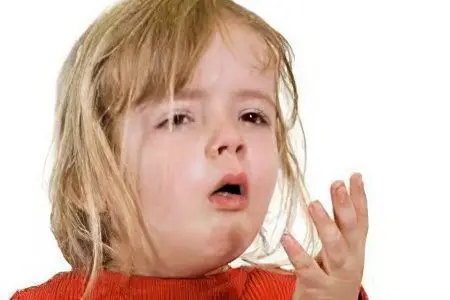
The most common type of bronchitis in children is acute. Its other name is simple bronchitis. It develops at any time in the life of infants, regardless of the individual characteristics of the organism. It is characterized by a gradual, consistent and favorable course. Rarely complicated by respiratory failure. The average duration of the disease until complete recovery is 2,5-4 weeks.
Symptoms of acute bronchitis in children
The symptoms of acute bronchitis differ from other respiratory diseases in some ways that are important in the differential diagnosis. Consist of a triad of features.
Cough is the central symptom around which the diagnostic search is built. Its appearance indicates the beginning of the inflammatory process in the bronchi. It differs from other species that develop with laryngitis and tracheitis in its softness and character. Its two-phase structure is observed – first dry, then wet. Appears at approximately regular intervals, rarely associated with inhalation of air, which is observed with laryngotracheitis.
A general hyperthermic reaction that appears even before the onset of the cough.
Coarse dry or moist rales of various sizes. Small crepitant noises are not typical. They develop with obstructive bronchitis, bronchiolitis and bronchopneumonia.
Other symptoms in the form of a violation of the general condition, poor sleep and refusal to eat, shortness of breath, tachycardia and an increase in the frequency of respiratory movements are not characteristic of the usual course of acute bronchitis. Their appearance indicates the addition of complications or the transition of the process into an obstructive form.
Treatment of acute bronchitis in children
Treatment begins immediately after confirmation of the diagnosis:
1. Antibiotics with a wide spectrum of action. They have the same blocking effect on many groups of microorganisms that can cause bronchitis. Recommended in pediatrics: augmentin, amoxiclav, ceftriaxone, cefotaxime. The dosage form of the drug is selected depending on the severity of the disease.
2. Mucolytics and expectorants (drugs that stimulate the excretion of mucus and its thinning.) In children under one year old, as well as up to 2-3 years old, the use of herbal and synthetic preparations based on ambroxol, ivy, thermopsis, plantain, etc. is shown. , fluditec, lazolvan, ACC in age dosages.
3. Antitussive drugs. They are prescribed in the first phase of bronchitis, when there is still no expectoration, but the cough is hacking (sinekod, stoptussin.)
4. Anti-inflammatory and antipyretic agents depending on body temperature.
5. Immunomodulators – preparations based on echinacea, vitamin C, bronchomunal.
How to treat bronchitis in a child?
With bronchitis, practical advice regarding treatment should be based on a single rule – no amateur performance. The treatment process can take place on an outpatient and inpatient basis, depending on the condition of the child. All infants must be hospitalized without fail. Children up to a year and up to 2-3 years with a mild course of bronchitis can be treated at home, subject to the treatment regimen.
In children, bronchitis often acquires a chronic course, with constant relapses up to a three-year period. Therefore, it is imperative to adhere to the established terms of the treatment process. It includes:
1. Diet. Allergenic foods are excluded (chocolate, honey, raspberries, citrus fruits.) Food should be fractional, high-calorie and nutritious food. Be sure to drink plenty of water (alkaline mineral water without gas, light tea, cranberry juice.) Mom’s nutrition during breastfeeding is the same.
2. Mode. Exclude active loads and walks on the street, especially in bad weather and in the acute period of the disease. After the temperature drops, you can go out into the fresh air. Dress your child appropriately for the weather.
3. Expectorant and antitussive drugs. A differentiated approach is needed here. If a child has a dry cough that constantly disturbs and disturbs sleep, it is recommended to take antitussive drugs (sinekod, stoptussin.) When the child begins to cough up, drugs are indicated to thin sputum (acetylcysteine - ACC, acetal C) and remove it from the bronchi (lazolvan, bromhexine, fluditec , prospan, herbion). (more: list of expectorants)
4. Inhalation therapy. The most effective method of treatment for any type of bronchitis. With its proper use, any need for prescribing antibacterial drugs may disappear.
5. Antiviral and immunomodulatory drugs. Considering that most cases of bronchitis occur against the background of respiratory infections, homeopathic drops or tablets (aflubin, anaferon for children, umkalor.)
Antibiotics for bronchitis in children – an indispensable attribute of treatment. It is advisable to include them from 2-3 days of any bacterial infection at the slightest sign of bronchitis. The duration of their application for at least five days must be strictly observed. If necessary, it is better to extend the duration of treatment in order to prevent the development of bacterial resistance to antibiotics and the chronicity of the process. In the event of an allergic reaction to the drug, it is replaced by another (preferably from a different group) and antihistamines are prescribed for cover.
Massage for bronchitis in children – a natural method of adjuvant therapy that does not require financial costs. Worked very well in the recovery period. In the acute stage is contraindicated. The criterion for appointment may be the appearance of a wet cough after a decrease in temperature. It should be vibrating and help to remove sputum. To do this, the child is placed on the stomach. Sequential stroking of the skin is made with further tapping movements towards the spine from the bottom up. The duration of one procedure is 7-9 minutes. The procedures are performed daily for about two weeks (more: why do you need a massage for bronchitis?).
General recommendations
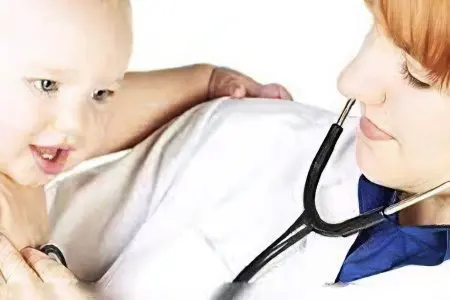
The doctor, examining the child, can detect swelling of the chest. The retraction of the chest sections is visually visible, which is a consequence of the fact that auxiliary muscles are involved in the process of breathing. The main requirements in the treatment of bronchitis in children are the exclusion of self-treatment, timely access to a specialist who will determine the direction of treatment.
In case of danger of transition of bronchitis into a protracted form, in the presence of elevated body temperature, the child is subject to hospitalization. This is especially true for children under 1 year of age and younger, as they are characterized by incomplete functioning of the respiratory system. Acute bronchitis is treated with warm drinks, antipyretic drugs, and bed rest. After the body temperature drops and becomes stable, inhalations are carried out, rubbing the chest area.
If the disease does not recede within a week, an additional examination is required. It is not advisable for children to take antibiotics. Physiotherapeutic methods are introduced into the complex of medical procedures, a special diet is prescribed.
As an antibiotic therapy, the child should be given only those indicated in the medical prescription. Parents need to be responsible for this problem, not to buy random, advertised drugs.
Children under one year old should not be given drugs containing codeine. Alternative methods of treating bronchitis can be used as auxiliary in the presence of the main therapeutic therapy.
To avoid the diagnosis of “bronchial asthma” in the future, children who have bronchitis are placed on a dispensary record. In winter, it is advisable not to wrap children too much, to avoid sweating, clothing should not be blown by the wind.
Hypothermia is one of the first causes of bronchitis. Industrial dust also often causes illness, the best place for children to play is the area where trees grow, it is recommended to walk with them away from production. Attention should be paid to cleanliness in the children’s room, dusty air is a breeding ground for microorganisms that can provoke inflammation of the bronchi. It is useful to carry out hardening measures, introduce physical exercises, breathing exercises into the regimen.
Author of the article: Sokolova Praskovya Fedorovna, pediatrician









